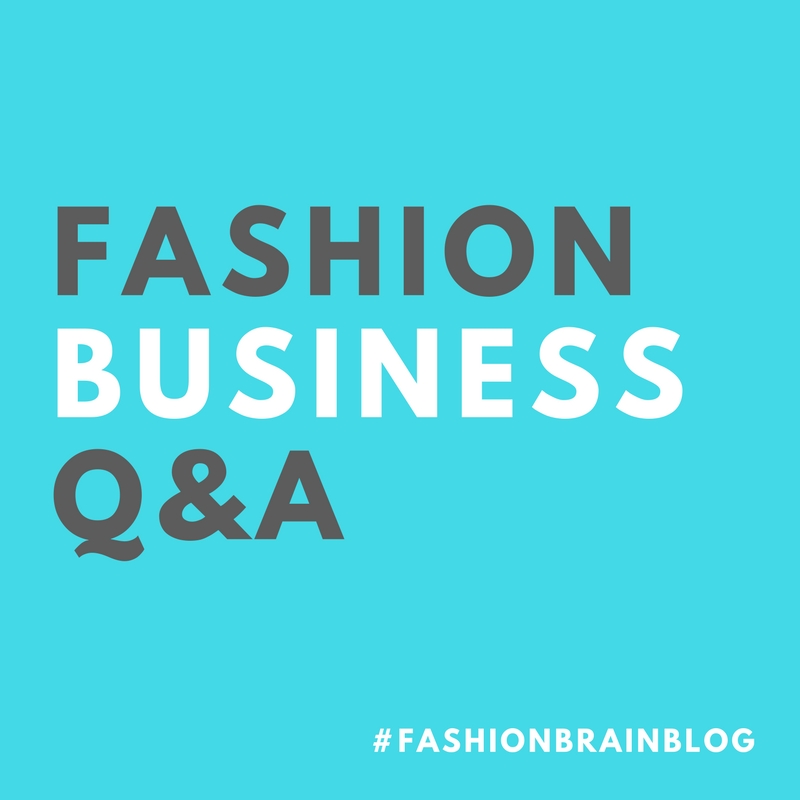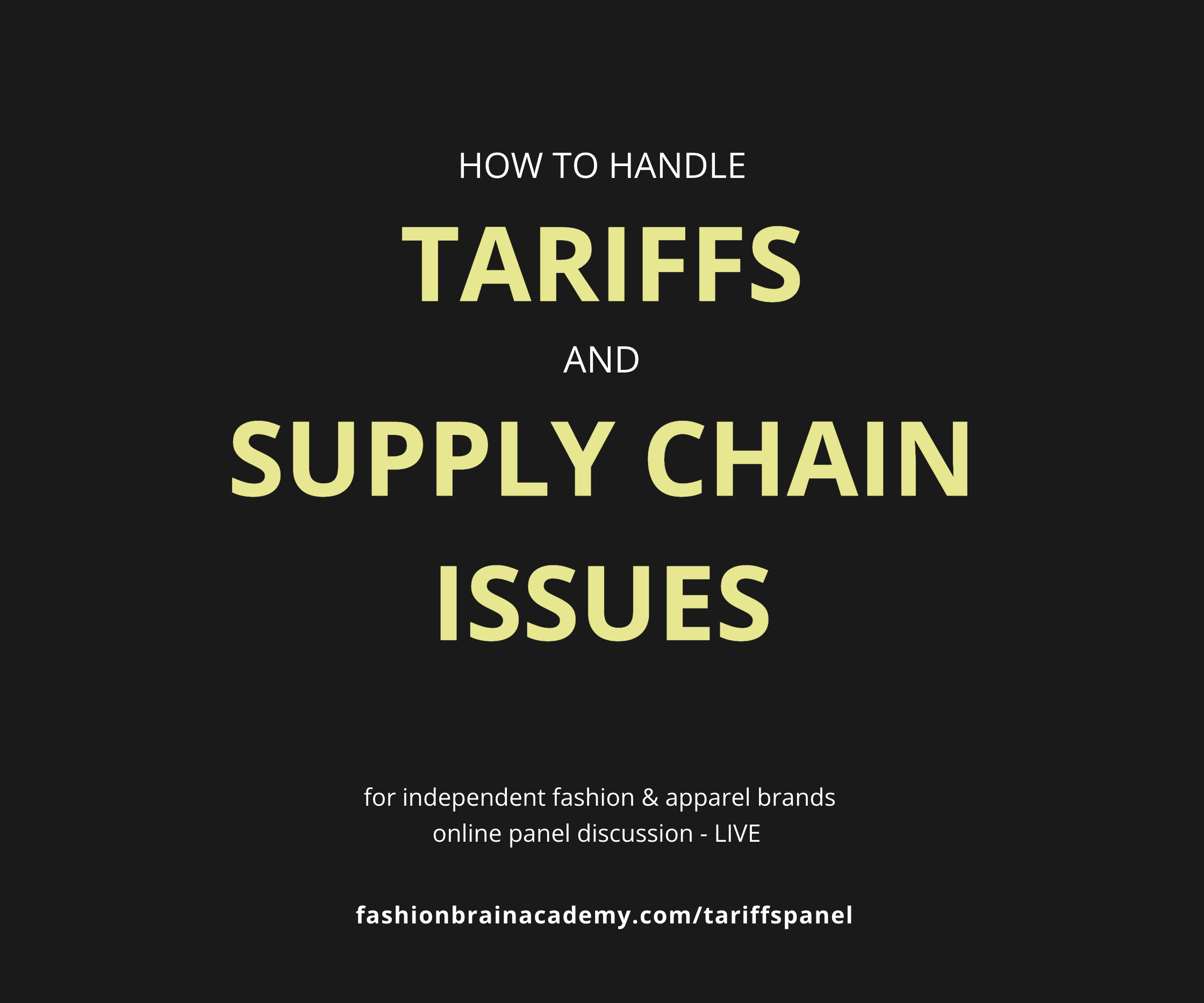The 10 Most Common Questions I Get From Fashion Designers

Got questions? I got answers.
10 Q’s and A’s for the Struggling Fashion Designer
I put together a list of some of the top questions from designers that I get all the time.
The format of this document is Q & A – taken from my New Designer Program, courses, live events and group coaching calls. What you’ll read are direct transcripts so please excuse grammatical errors, etc. You’re hearing it from the horse’s mouth. Me being the horse in this case…
Q: “Is there a way to know if my idea will work? Seriously, anything you suggest to test it out?
A: Get yourself a crystal ball and rub it 3 times a day. OK, sorry about that. I have an article for you to read. Read the entire thing and DO WHAT HE SAYS to survey your target market. This will help but there’s no real way to know who will succeed or not. My personal opinion is that the one who wants it MORE, who’s hungrier, will always succeed. The person who’s willing to be knocked down 97 times in a row, be humiliated, and still get back up to work at it the next day. And add to the mix that this person is willing and WANTS to listen to the market and adjust accordingly. Because the market decides. Always. If the customer buys, you have a business. If they don’t, game over.
Here’s the article:
Q: “I have 3 small kids and want to know if there’s a niche you suggest that’s a little ‘easier’ than others. I’m not looking to make tons of money right away. I just want something to keep my brain going while the kids are young, and that can turn into something bigger as they grow and I have more time.”
A: Look into products that don’t have to be fitted or sized too much: cross women’s apparel off of your list. This will eliminate fittings, grading, fit model costs, excess inventory, etc. Think about t-shirts, purses, jewelry, baby products (blankets, etc.) and hair accessories. If you plan to work from home, a good route to take is through home parties and online selling. If you plan to sell online, make your product something easily understandable, so it looks the same in person as it does on your screen.
Q: Should I have a business partner?
A: That’s a loaded question. Personally, I’m not a big fan of business partners. At the same time I would bring one on in a heartbeat if that person brought to the table, to the business, the opposite of the skills I had. Generally, two designers going into business together is a bad idea. What’s the point? What do you need another designer for? One designer creative type paired with a person who loves to sell and can’t wait to go on the road and take the product to trade shows and loves marketing and all that. Fabulous! One designer and one kind of money, business-I love doing accounting person, is a great partnership. My hunch is, I’ve had a partner in the past, he was a great guy, the business he designed, it was just a portion of my business where I went it with a partner to sell wholesale. Some people say they’d never do without a partner. If they bring, if they complement your skills and they bring to the table what you don’t have and you can’t afford to hire, I would do it. That’s the only way I would do it thought, to be honest. But this is all personal opinion. This is nothing based on statistical research of partners. This is just my bet.
Q: Is it necessary to have my contractor sign an NDA (Non-Disclosure Agreement)?
A: For me no. I don’t worry about it because a lot of times, if it’s a bigger factory, they’re not going to sign it because they’re going to say “I can’t control who comes in and out of here.” You can always bring it up and see who goes for it and says okay. But I wouldn’t worry if somebody says no. Even for me, if I have a private coaching client, of course that’s confidential. But if I have a place of business, it’s kind of hard to guarantee something like that. I think the longer I’m in business, the less I worry about things like NDA’s. I know when people are just starting out, they’re very concerned that somebody might steal their ideas. But honestly, once you’ve been doing it as long as I have, you know how hard it is to actually execute an idea and you realize it’s not really about the idea and how great it is. It’s about who can get it actually done and done well and be able to sell it, right? I wouldn’t worry too much about it but if it makes you feel comfortable and they’re willing to do it, then fine.
Q: Out of curiosity from your experience, did you change a lot of your sample people throughout your process or did you stick with one throughout?
A: I was in business for over 14 years and things changed a lot over the years. This is a business of relationships – and I had a fantastic pattern maker (who really GOT me and my brand) for over 10 years.
I never want just one sewing contractor because to me it’s too risky. If something goes wrong with the contractor or stitches are falling out or they doubled their prices or for instance in my case, the woman who owns the shop has to go to Poland for a month because her mom died – which is awful – but at the same time, I couldn’t get my stuff.
The factory closed for a month. It was all very last minute since she died suddenly so it was a nightmare. All of my fabric and samples were locked up for the entire month while the factory owner was out of town. After that experience, I never EVER put all my eggs in one contractor basket.
It’s just like having a backup for other things in life. It’s like babysitters – for anybody listening who has kids. You’ll have your favorite babysitter but you don’t stop calling the others completely because lord knows you’re going to need more than one option. You have to play the game and spread the risk.
Q: “Jane, could you suggest a good place to get labels for my new line of menswear?”
A: Keep this in mind: When you’re ordering labels, you get a price break when you order large quantities. The price break can be so dramatic that we get excited, and we want to order thousands of labels at once.
BEWARE! Do you really want all of those labels hanging around? Your customer may end up being different than you originally thought, or maybe your niche changes and your branding needs adjustments. Keep this in mind when ordering labels in the beginning.
Order the minimum amount of the labels. That way, you have the freedom to change it. You may pay more per piece upfront, but you are not sitting on thousands of labels if your idea changes. Round two, go for bigger quantities!
A few good label sources:
- Mikan Printinghttp://www.mikanprint.com/company.html Ask for Valerie or Alison at Mikan Printing. 704-498-4655 Ext. 101. Ask Mikan to send a sample bag and to ask them about art work requirements. They also do care labels, size tags, custom printing in elastic, twill tape and any other narrow fabric and GREAT hang tags.
- Fancy Weaver http://www.fancyweaver.com/label/Fancy Weaver has a 200-piece minimum, which is small and convenient.
- Labeltex Mills http://www.labeltexusa.com/
Q: How important is a fit model and what is the cost effective way of using them? Do you have any resources for fit models? I’m developing fitness apparel.
A: That’s such a good question. If you’re near a major fashion hub, NY or Los Angeles, some modeling agencies have an entire fit model section, a fit model department. These models are really, really good at what they do and they’re not cheap. What they do that’s different than a regular friend or somebody who’s the right size is they’re able tell you details like the neckline is pointing this area or when I sit, the rise is too low. A regular person can do this too but a fit model has done it so many times. It would be my first choice if you find an actual fit model. But don’t lose faith if you can’t.
To find a “regular” person to be your fit model, you first need to determine the precise measurements your sample size model should be based on your standards sizes. You find a fit model that has the closest measurements possible (or exact) to the sizing you and your patternmaker decide for your brand. For example, I need someone with a 27 inch waist, 34 inch hip, etc. If a model or anybody comes to you and tells you, these are my measurements, don’t believe them. Don’t trust the card from a modeling agency either. Measure them yourself!! Every single time.
When it comes to models, sometimes their comp card is just off. They’ve changed sizes. Who know – I’ve seen it when the model was 17 years old and she just grew! She was bigger than her comp card said. It happens all the time. Bring them in, measure them and then decide.
The other way that’s a good way to find a fit model is Craigslist. You can post the measurements and what you need and interview people. I also suggest you look for someone that may have time off in the daytime — aspiring actors, wait staff, stay-at-home-moms, people in service industries.
Q: Is it more professional to have a .com email address on your website rather than a Hotmail or Google?
A: Yes. Absolutely. It shows you’re in business.
Q: How do you set one up?
A: I would ask you to talk to a web person about that.
Q: How do I handle returns? Meaning, do I repackage and resell or dump, etc.?
A: When it comes to returns, it depends on what you sell. If you can repackage and resell it, absolutely I would do that. When I had my blanket line, it was easy for me to wash the blankets (they get softer as you wash them) and re-sell the item. Absolutely try not to dump anything. If you have to dump it, dump it to charity or something.
Q: “How do I find a sales rep?”
A: Boutique buyers and store owners are going to be your best friends when looking for a sales rep. They know every rep in the region because they are constantly buying from them. If they can suggest a rep that would be good for you, that will be a much better way to start than just blindly looking for someone. Maybe the storeowner will call the rep for you, which gives you an introduction.
Another option is to go to a trade show where you think you would like to exhibit. Look at different booths and take notes on the ones that have the same aesthetic as your products. You want your items to fit in with the other lines that the reps have, making it a one stop shop for the buyers.
Talk to people in the industry and try to figure out reputations of different sales reps. It may be difficult, but finding a rep is definitely something you have to do yourself. It’s kind of like finding a husband or choosing a pet – no one can do it for you.
Q: “OK Jane, I think I’m ready to actually START my business. What should I do now?”
A: LOL – I planted this one… But really, if you’re serious about launching a PROFITABLE business and you want to avoid the most common newbie mistakes, I suggest you invest in yourself, your future, and your business with this program. It works.
Startup Course: https://fashionbrainacademy.com/training-courses/new-designer-program/
Got a question about your business? Leave it in the comments below and I’ll do my best to get you an answer, OK? (Please don’t ask, “where can I find XYZ fabric?” because I cannot possibly answer that for you. Nor can I rattle off a list of manufacturers. Just sayin…)



One Response
Great Post! By7 the way I have another Question about this topic
what general area of design do you work or wish to work?